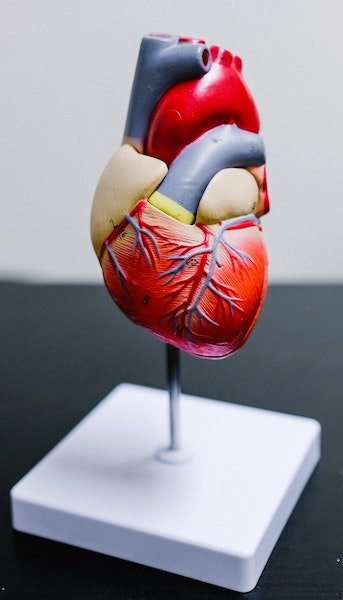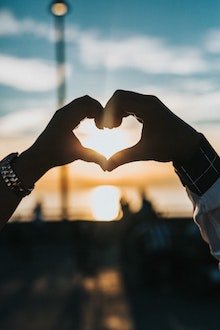Your heart is a muscle.
It works like a pump.
It sends blood around inside your body.
Blood takes oxygen to all parts of your body.
It takes away waste.
The movement of the heart and blood is called the cardiovascular (say car-dee-oh-vass-cue-luh) system of the human body.
The human heart. ©Getty
The heart is a muscle inside your chest. It pumps blood to every part of the body.
Blood is red and watery and helps keep people well. Blood goes in and out of the heart. It goes out of the heart in tubes, or vessels, called arteries (say ah-ter-reez).
Blood is pumped around the body, and in and out of the heart. Getty Images
The blood takes oxygen and nutrients to all parts of the body and takes away waste. It goes back to the lungs through tubes, or vessels, called veins (say vanes). The lungs put air back into the blood (it becomes oxygenated), before it goes back into the heart again, to be pumped out through the arteries and round the body again. Oxygenated blood is pumped out of the aorta at about 1.6 km per hour. It takes about 20 seconds for blood to circulate around your entire body.
Sections of the Heart
Photo Kenny Eliason on Unsplash
The human heart consists of four sections, called chambers. There are two on each side of the heart, two on top and two underneath. On top there is a left atrium and a right atrium (say ay-tree-um). The two together are called atria (say ay-tree-uh). These fill with blood that is returning from the body and lungs. Underneath the atria are the left and right ventricles. They pump out the blood to go to the body and lungs. The left and right sides of the heart are separated by a thick wall of muscle called a septum.
A machine is used to check a person’s blood pressure ©iStock
Pulse and Blood Pressure
Before each beat, the heart fills with blood. Then the muscle squeezes and pushes the blood out. Your heart does this constantly. You can feel your heart beating. It is called a pulse. A doctor or nurse feels your pulse on your wrist, but it can be felt at other places too. Your heart beats about 100 000 times each day. Sometimes a doctor or nurse needs to check that a person's heart is beating strongly and at the right speed. This is called blood pressure. A machine is used to measure a person's blood pressure.
Blood Types
There are different types of blood. Most people have the blood called type A or type O, and other types are more rare. If a person is hurt or ill and loses a lot of blood, they urgently need more blood to be put inside their body. This is called a blood transfusion. A bag of the same type of blood is attached to a rack and a tube are attached to it. The other end of the tube is put inside a vein in the person's arm. The blood drips slowly from the bag down the tube.
A bag of "A Positive" blood at a Blood Bank.© Getty Images
Extra blood is kept at a Blood Bank. People go there to give blood. Nurses take the blood from a vein.
The blood is kept in special bags and kept in storage at the blood bank for times when it is needed.
People who give blood are helping save other people's lives. It is safe to give a little blood because a healthy person's bone marrow makes more blood quickly.
Photo Tyler Nix on Unsplash
It’s a good idea to get information from more than one source!
See the sections of the heart and how the heart works:
https://www.neok12.com/video/Circulatory-System/zX5d7d0e41705968036a4351.htm
Read more about the cardiovascular system:
http://kidshealth.org/en/teens/heart.html
Watch a video about the circulatory system
Explore science games on circulatory system at NeoK12








